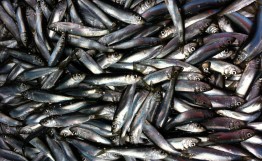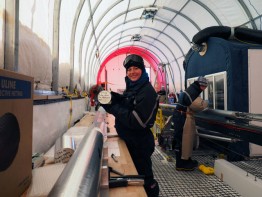Each week we share the latest peer-reviewed publications coming from the College of the Environment. Over the past week, eight new articles co-authored by members of the College were added to the Web of Science database. They include articles about sea stars, environmental DNA, and more. Read on!
Read more »Herring fishery's strength is in the sum of its parts, study finds
A wise investor plays the financial market by maintaining a variety of stocks. In the long run, the whole portfolio will be more stable because of the diversity of the investments it contains. It’s this mindset that resource managers should adopt when considering Pacific herring, one of the most ecologically significant fish in Puget Sound and along the entire West Coast, argue the authors of a recent paper appearing in the journal Oecologia.
Read more at UW Today »Dynamics of Disbelief: Q&A with Harvard University science historian Naomi Oreskes
Naomi Oreskes, a geologist, historian, educator, and author, works at the center of science and politics. Over the past decade, she has explored the history of scientific consensus and dissent around anthropogenic climate change. Oreskes will be at the University of Washington on Mar. 1, 2016.
Read more »UW part of team that drilled first deep ice core at the South Pole
This January — high summer at the South Pole — a University of Washington glaciologist helped lead a project that surpassed its goal to drill the first deep ice core at the planet’s southernmost tip, providing material to help solve a climate puzzle. Eric Steig, a UW professor of Earth and space sciences, returned to Seattle this month after being chief scientist for the final stretch of the National Science Foundation-funded effort at the Antarctic station.
Read more at UW Today »For weather forecasting, precise observations matter more than butterflies
In the 1970s, scientist Edward Lorenz famously asked whether the flapping of a butterfly’s wings in Brazil could lead to a tornado in Texas. During the decades since, the butterfly effect and chaos theory have sparked countless debates and pop culture references. But the question also holds practical importance: What do small, unpredictable events mean for the future of weather prediction?
Read more at UW Today »





